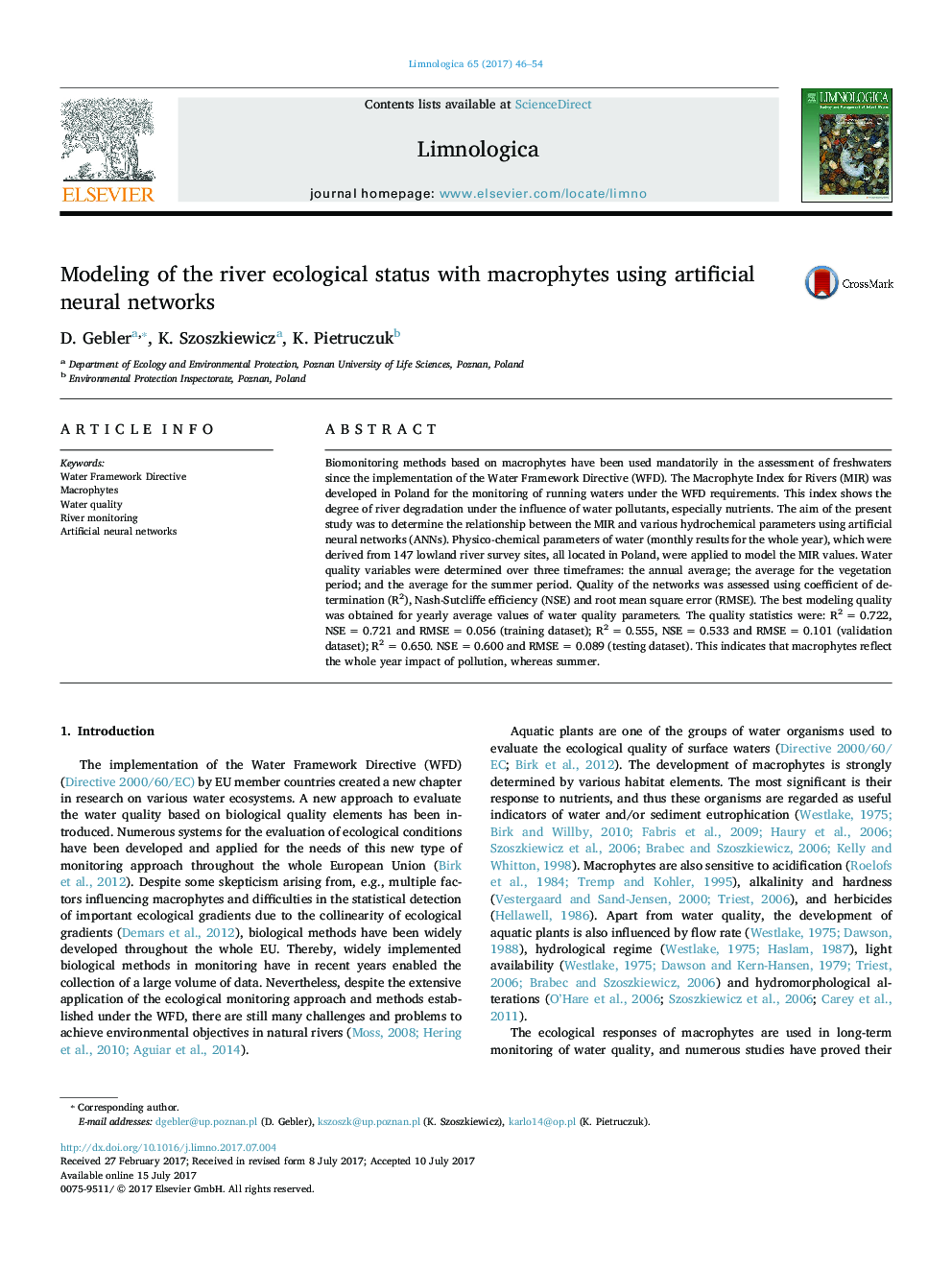| کد مقاله | کد نشریه | سال انتشار | مقاله انگلیسی | نسخه تمام متن |
|---|---|---|---|---|
| 5744875 | 1618557 | 2017 | 9 صفحه PDF | دانلود رایگان |
Biomonitoring methods based on macrophytes have been used mandatorily in the assessment of freshwaters since the implementation of the Water Framework Directive (WFD). The Macrophyte Index for Rivers (MIR) was developed in Poland for the monitoring of running waters under the WFD requirements. This index shows the degree of river degradation under the influence of water pollutants, especially nutrients. The aim of the present study was to determine the relationship between the MIR and various hydrochemical parameters using artificial neural networks (ANNs). Physico-chemical parameters of water (monthly results for the whole year), which were derived from 147 lowland river survey sites, all located in Poland, were applied to model the MIR values. Water quality variables were determined over three timeframes: the annual average; the average for the vegetation period; and the average for the summer period. Quality of the networks was assessed using coefficient of determination (R2), Nash-Sutcliffe efficiency (NSE) and root mean square error (RMSE). The best modeling quality was obtained for yearly average values of water quality parameters. The quality statistics were: R2Â =Â 0.722, NSEÂ =Â 0.721 and RMSEÂ =Â 0.056 (training dataset); R2Â =Â 0.555, NSEÂ =Â 0.533 and RMSEÂ =Â 0.101 (validation dataset); R2Â =Â 0.650. NSEÂ =Â 0.600 and RMSEÂ =Â 0.089 (testing dataset). This indicates that macrophytes reflect the whole year impact of pollution, whereas summer.
Journal: Limnologica - Ecology and Management of Inland Waters - Volume 65, July 2017, Pages 46-54
